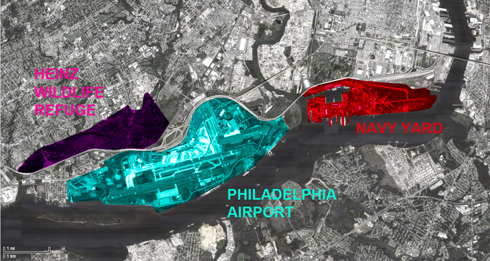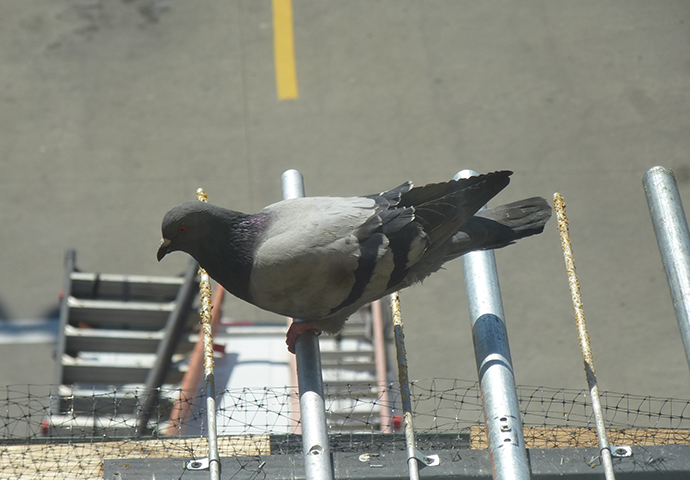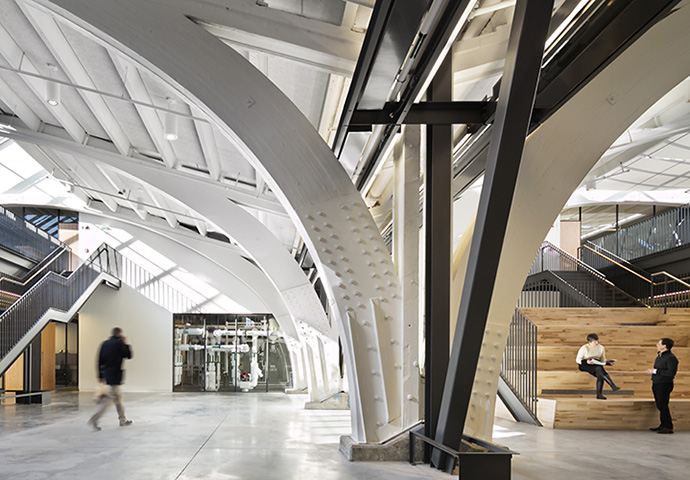Examining Ecological Context for Architecture

The Energy Efficient Buildings Hub sits within the Philadelphia Navy Yard, to the north of the Heinz Wildlife Refuge and the Philadelphia airport on the Delaware River.
During our design process for the Energy Efficient Buildings Hub in the Philadelphia Navy Yard, we have been investigating the impact that the nearby wildlife habitat at Heinz Wildlife Refuge might have on facade design, building orientation, and day lighting, as well as the potential for bird strikes.
We found that the refuge is not close enough to the EEB Hub project site to have immediate implications regarding bird strikes and other avian issues, but its ongoing experience with environmental management for the purpose of conservation and habitat/species protection is a useful resource for techniques and design principles. The presence of the refuge proves that it is possible to create high quality habitat for birds and other species of interest in this busy corridor on the Delaware River. It further indicates that landscape design and management is an essential tool for controlling nuisance species such as Canadian Geese and supporting beneficial communities such as migratory songbirds and local threatened species. Furthermore, current landscape design practices in the Navy Yard, such as turf grass and paved parking lots, contribute negatively to human/avian conflict on the site. The EEB Hub's location on a migratory path means that bird strikes are a serious concern, and that measures for controlling them should be considered as part of building design.
According to Gary Stolz, Conservation Director and Refuge Manager at the Heinz Wildlife Refuge, landscape design is the largest factor affecting bird populations and other species in the Navy Yard. Not only does the present landscape of extensive lawns, surface parking, and small fragmented patches of planting beds fail to provide habitat for beneficial species and help draw them away from the airport, but the present landscape unintentionally attracts many nuisance birds, most notably Canadian Geese, seagulls, and invasive and predatory edge condition birds such as the cowbird.
Species of particular concern present in the Navy Yard include the red bellied turtle, bald eagle, American eagle and several hundred species of migratory birds. Due to the prevalence of short turf grass, there is a severe shortage of nesting habitat for these species. The landscape design for the EEB Hub buildings would benefit from the inclusion of low maintenance habitats, such as low meadows, tall grasses, and forested groves. Inclusion of tree species rich in biomass, flowers, and seeds, such as white and red oaks, American beech, dogwood, viburnum and hardwood fruit trees, constitute an important food source for pollinators and migratory birds, and aid in the habitat potential for avian populations. Maintenance techniques, such as early spring mowing and retention of seed heads on grasses, will both protect habitat of native turtles and other ground nesting populations and curb the growth of geese populations.
Architectural measures to mitigate bird strikes should also be investigated in greater detail. Glass coatings, secondary structures, and careful detailing of exterior lighting and surface reflections can all be used to decrease bird strikes. Building managers at the Heinz Wildlife Refuge have been more successful at controlling bird strikes by managing reflectivity and exterior lighting than by utilizing expensive glass coatings. Building massing, orientation, and landscape design of surrounding sites should be considered for their potential to draw birds away from the building facade.



